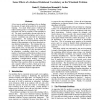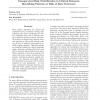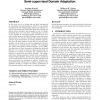14 search results - page 2 / 3 » Learning to Find Relevant Biological Articles without Negati... |
BMCBI
2004
13 years 4 months ago
2004
Background: Kernel-based learning algorithms are among the most advanced machine learning methods and have been successfully applied to a variety of sequence classification tasks ...
ML
2006
ACM
13 years 4 months ago
2006
ACM
Many domains in the field of Inductive Logic Programming (ILP) involve highly unbalanced data. A common way to measure performance in these domains is to use precision and recall i...
IJCAI
2007
13 years 6 months ago
2007
A key issue in artificial intelligence lies in finding the amount of input detail needed to do successful learning. Too much detail causes overhead and makes learning prone to ove...
ICML
2010
IEEE
2010
IEEE
Unsupervised Risk Stratification in Clinical Datasets: Identifying Patients at Risk of Rare Outcomes
13 years 5 months ago
Most existing algorithms for clinical risk stratification rely on labeled training data. Collecting this data is challenging for clinical conditions where only a small percentage ...
CIKM
2008
Springer
13 years 6 months ago
2008
Springer
In this work we try to bridge the gap often encountered by researchers who find themselves with few or no labeled examples from their desired target domain, yet still have access ...



